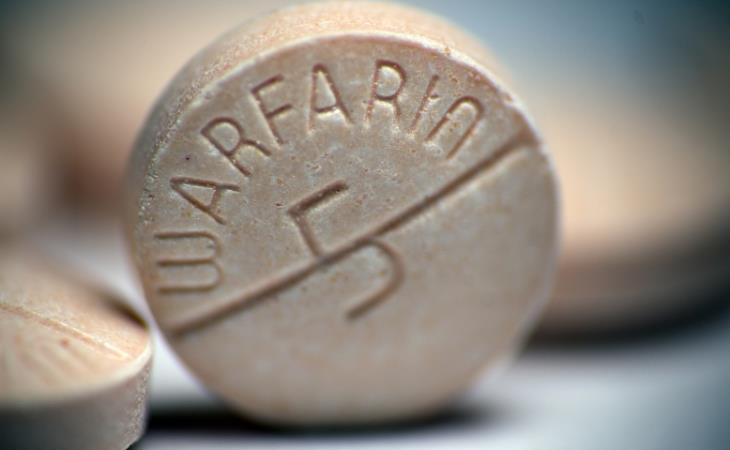After a month-long Scottish vacation in 1928, pathologist Alexander Fleming returned to his laboratory at St. Mary's Hospital in London. To his surprise, a discarded culture dish he had left exposed on a window sill had become contaminated with an airborne mold. This mold, a type of fungus, had halted the growth of the harmful bacterium Staphylococcus aureus, adjacent to its blue-green strands.
Fleming's accidental encounter led to the discovery of the first antibiotic, penicillin. In recognition of this serendipitous find, he jointly received the Nobel Prize for Medicine in 1945 with Florey and Chain, Oxford chemists who streamlined the mass production of penicillin, making it available for treating wartime injuries in World War II.
“When I woke up just after dawn on 28 September 1928, I certainly didn’t plan to revolutionize all medicine by discovering the world’s first antibiotic, or bacteria killer,” Fleming later said. “But I suppose that was exactly what I did.”
2. Heart pacemaker
The world's first implantable heart pacemaker was an accidental invention by New York engineer Wilson Greatbatch. In 1956, he aimed to develop a heartbeat monitoring device, but he mistakenly used an incorrect resistor in his prototype, resulting in the device generating consistent electrical pulses.
As soon as Greatbatch recognized that his pulses resembled the electrical patterns of a normal heartbeat, he recognized the potential of his invention. After two years of refining his design, he successfully patented a pacemaker that could be implanted in the heart in 1960, and it soon entered full-scale production. Today, these life-saving devices, born from his initial invention, improve the lives of over half a million patients with slow heartbeats every year.
3. Warfarin
The blood-thinning substance, also known as an anticoagulant, was discovered in the 1930s by American biochemist Karl Paul Link when a Wisconsin farmer sought his expertise to investigate unexplained hemorrhages among his cattle. Upon examining the cattle's feed, Link identified the anticoagulant substance. Following that, he was able to isolate a chemical, now known as warfarin, that could effectively treat people with blood clots. Remarkably, warfarin remains in use to this day.
4. Viagra
Pfizer's laboratories in Kent were the birthplace of one of the most famous accidental medical breakthroughs. Initially formulated as a remedy for angina, this treatment ended up becoming the world's most famous blue pill for erectile dysfunction: Viagra. Early clinical trials involving sildenafil, now known as Viagra, revealed a remarkable pattern: male volunteers frequently experienced prolonged and unanticipated erections.
Further research found that Viagra, which was originally designed to relax cardiac blood vessels and enhance blood flow, had a similar impact on penile arteries. Since its launch in 1998, Viagra has revolutionized the intimate lives of countless men across the globe.
5. Nitrous oxide
Laughing gas, also known as nitrous oxide, was first discovered in 1772 by Joseph Priestly, an English clergyman and scientist who was known for the isolation of gases such as oxygen, carbon monoxide, and carbon dioxide. Priestly discovered the gas by dissolving iron fillings in nitric acid, which revealed its anti-anxiety effects. It wasn't until the 1840s, however, that pioneering medical professionals and dentists began to investigate its potential as a sedative. During the interim, it was mostly used to improve mood during social gatherings and had a reputation as a recreational stimulant.
6. X-rays
Wilhelm Conrad Roentgen, a German physicist, discovered X-rays by accident in 1895. Roentgen was doing cathode ray (extremely energy electron) tests in a dark room when he noticed a fluorescent screen on the other side of the room blazing despite a barrier obstructing the cathode rays. He began looking into this unusual event after being intrigued by it.
Roentgen initially thought that the fluorescence was caused by cathode rays, but after conducting multiple experiments and ruling out various possibilities, he determined that a new and unexplained type of radiation was being released. This radiation has the potential to travel through a variety of objects, including flesh and clothing, and expose photographic plates. The fact that these beams were invisible to human sight was particularly astounding.
Roentgen named the discovery "X-rays" since the letter X represents something unknown. Upon publishing his findings, he shared them with the scientific community, sparking much interest and further research. By using them, it was possible to obtain non-invasive images of the inner structures of the human body, which led to the development of X-ray machines and the field of radiology.
Roentgen's unintentional discovery of X-rays transformed medical diagnosis by allowing doctors to view into the human body without intrusive procedures. It was a fortuitous discovery that had a significant impact on science, technology, and healthcare.






